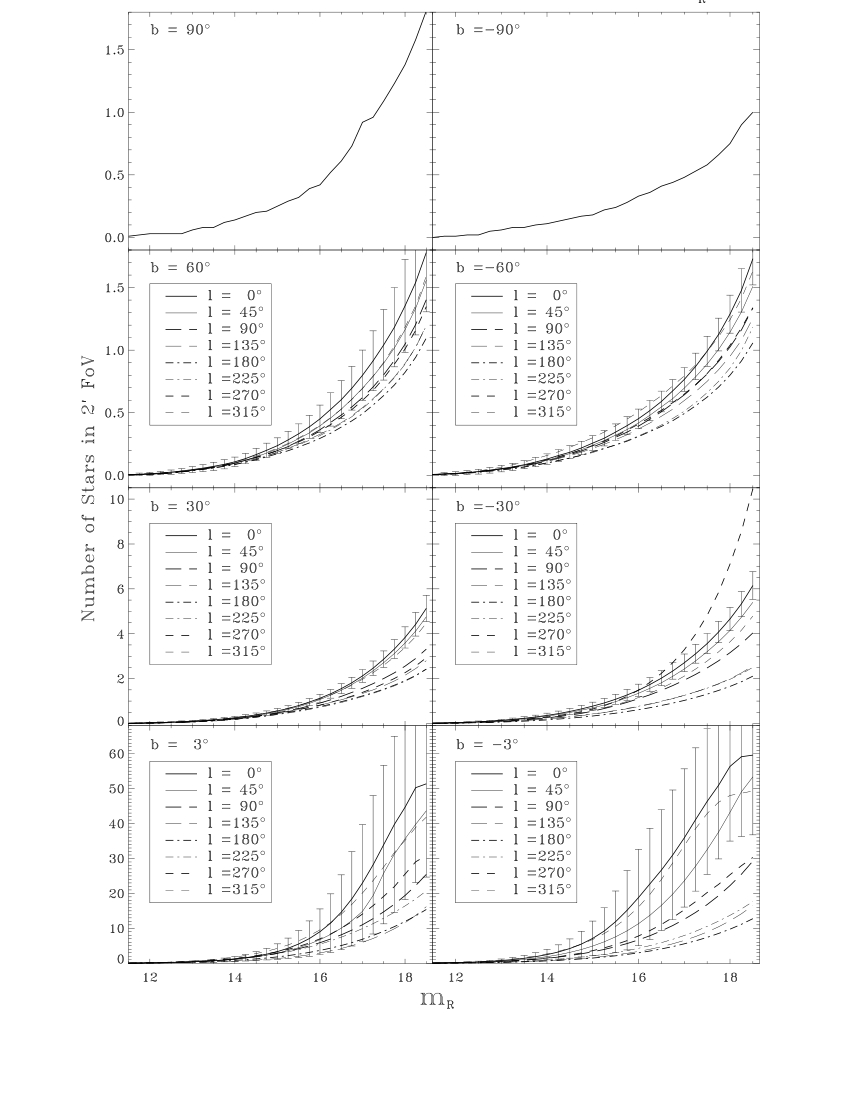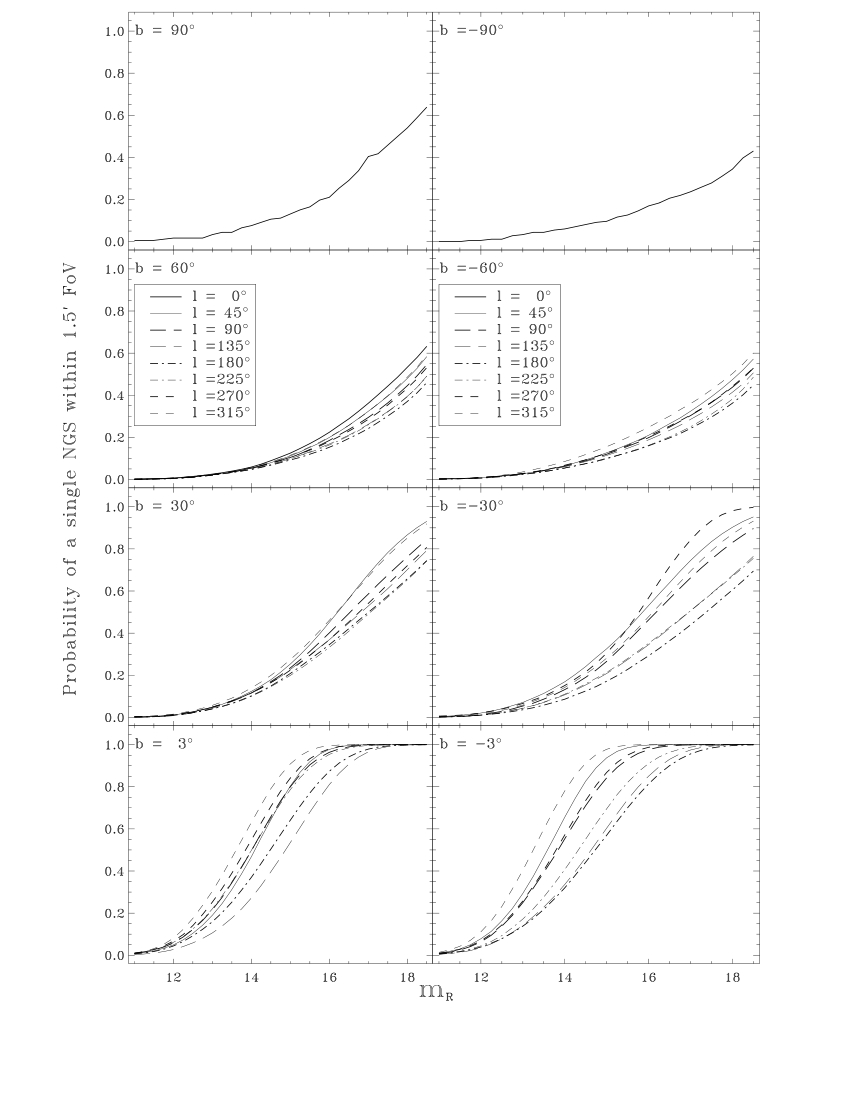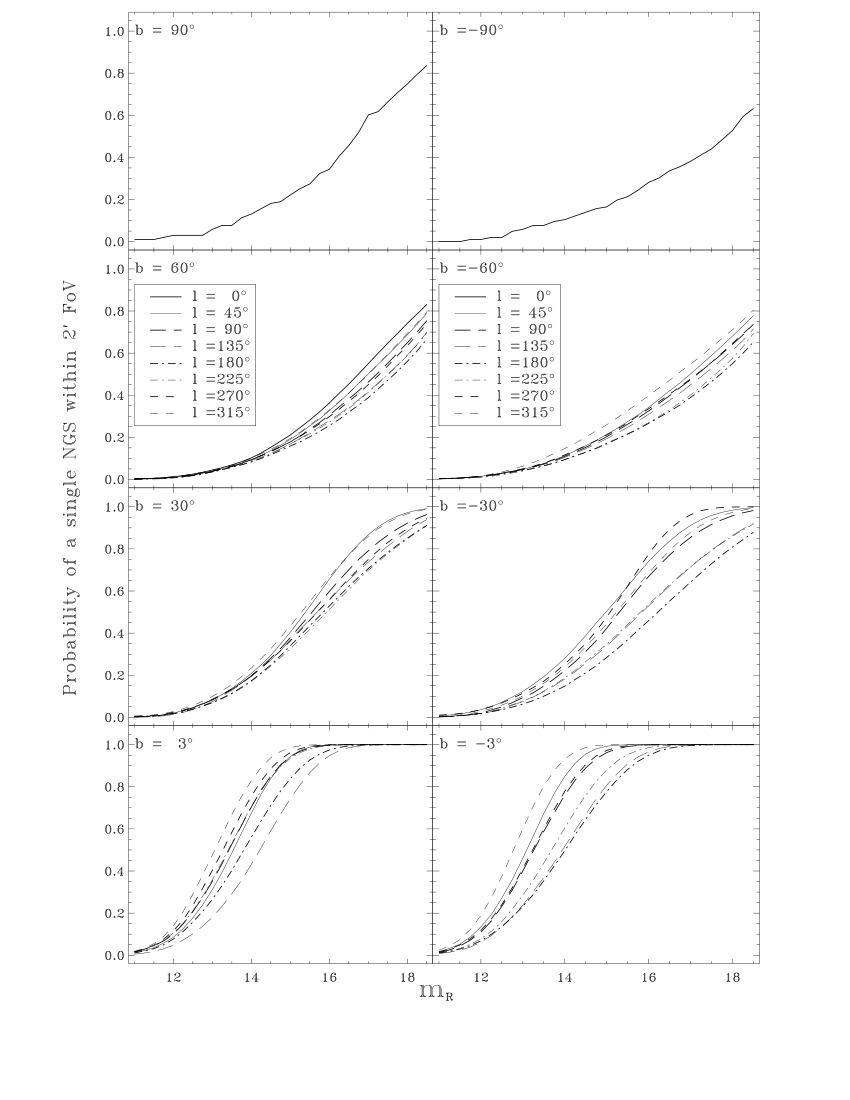
Sky Coverage

Sky Coverage |
The FRIDA Project Instrument Overview Science Drivers IAC Contribution IAC Project Team Sky coverage with AO with natural or laser guide star Other NIR instruments IAC programs on high spatial resolution techniques and atmospheric optics Contact Database (internal) |
Observations with Adaptive
Optics (AO) have the strong limitation of requiring the presence of a
suitable bright star, or point-like source, (R ~11 mag is ideal, but
not fainter than R~16 mag) relatively close, within a few arcsecs, to
the science target. This distance is referred to as thse anisoplanetic
patch, it depends on the site atmospheric conditions and observation
wavelength. Under good atmospheric conditions, seeing with FWHM ~ 0.6"
in the IR, a distance r <~ 12 arcsec from the science target in
K-band, r <~ 6 arcsec in J-band, are recommended. The closer the AO
star to the science target, the better the improvement in image
quality. Partial atmospheric correction might still be achieved if the
AO star is located at larger distance, but this should not exceed more
than 30 arcsec radius. Of course, the best atmospheric correction is
achieved when the target and the reference star are the same.
The implementation of a Laser Guide Star in GTC will somewhat easier the above requirements. Adaptive Optics with a laser still requires the presence of a star -so called tip-tilt star - near to the science target but it could now be fainter, R <~ 17 mag, and further, ~40", with decreasing performance for further distances up to 1 arcminute radius. The graphics bellow show a direct measurement of the number/probability-of-finding suitable stars for Adaptive Optics observations with and without a laser system. The presented calculations, by Fermenia, Devaney, Castro and Garcia, 2003 (GTC document NNTE/OPTI/0235-R), make use of the Guide Star Catalog (GSC-II), which is completed up to R=18.5 mag and samples the whole sky. It is shown the number of available stars within a field of view of 2 / 1.5 arcmin diameter, for different Galactic latitudes and longitudes, as a function of the magnitude of the star. As it can be seen, the probabilities are rather low in particular at high latitudes, which mostly affects extragalactic astronomy. However, it should be note that for example, nucleus of galaxies, quasars, if within the magnitude limits quoted above, are also perfect targets for AO observations - as shown in FRIDA science drivers.  Probability
of finding a reference star of a given magnitude, m(R), and different
Galactic longitude and latitude (l,b), within a FoV of 45 arcsec radius
from the science target, suitable for natural AO systems, and within a
FoV of 60 arcsec, suitable for laser guide systems. Different curves
within the same panel refer to the I-bands in which the data are
binned. For the sake of visualization only the error bars associated
with l = 0 degrees band are plotted, yet all curves within the same
panel (i.e. same b) exhibit the same level of dispersion. For b = 90
degrees there are no associated error bars as that bin was generated
with only 1 file per Galactic Pole (from B. Fermenia, GTC).
 Cumulative
star number densities as a function of the star magnitude. Each panel
displays for a given Galactic latitude the number of stars in a 1.5' FoV
with magnitude less or equal than m(R) (from Fermenia et al. 2003). Cumulative
star number densities as a function of the star magnitude. Each panel
displays for a given Galactic latitude the number of stars in a 1.5' FoV
with magnitude less or equal than m(R) (from Fermenia et al. 2003). Cumulative
star number densities as a function of the star magnitude. Each panel
displays for a given Galactic latitude the number of stars in a 2' FoV
with magnitude less or equal than m_R (from Fermenia et al. 2003). Cumulative
star number densities as a function of the star magnitude. Each panel
displays for a given Galactic latitude the number of stars in a 2' FoV
with magnitude less or equal than m_R (from Fermenia et al. 2003).
|
©Page maintained by the FRIDA group at the IAC